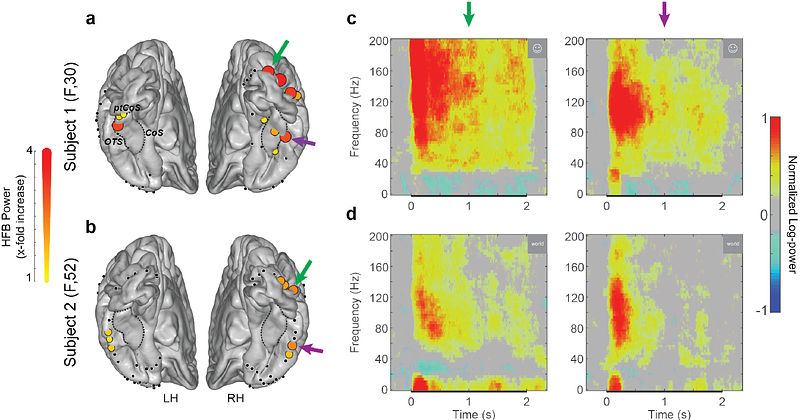Dissociating stimulus encoding and task demands in ECoG responses from human visual cortex

Dissociating stimulus encoding and task demands in ECoG responses from human visual cortex
Qadir, Z.; Huang, H.; Ozker, M.; Yoshor, D.; Beauchamp, M. S.; Kay, K.; Hermes, D.
AbstractBrain responses to sensory stimuli depend on the specific task performed by the observer. Previously, fMRI measurements in ventral temporal cortex (VTC) showed that BOLD responses to words and faces scale with the difficulty of a categorization task compared to responses observed during a fixation task (Kay and Yeatman, 2017). This scaling of BOLD responses is thought to be driven by the engagement of cognitive functions during image categorization. To understand how these cognitive task demands change dynamically over time and influence neural activity in VTC, we measured electrocorticography (ECoG) data in two human participants during the same experimental tasks. The ECoG high frequency broadband activity (>70 Hz) showed that local neuronal responses increased with image contrast (as expected for sensory encoding) and were scaled by task demands 0.2 seconds after stimulus onset. In contrast, ECoG low frequency activity in the alpha/beta range (8-28 Hz) was insensitive to image contrast and showed larger suppression with increasing task demands. These results indicate that high frequencies in VTC reflect both the encoding of sensory inputs and task demands, similar to prior BOLD response measurements, whereas low frequency oscillations represent task demands, not sensory inputs per se. In line with the interpretation that low frequency oscillations reflect pulsed inhibition, we speculate that suppression of low frequency oscillations amplifies neural activity in VTC in support of visual task demands.